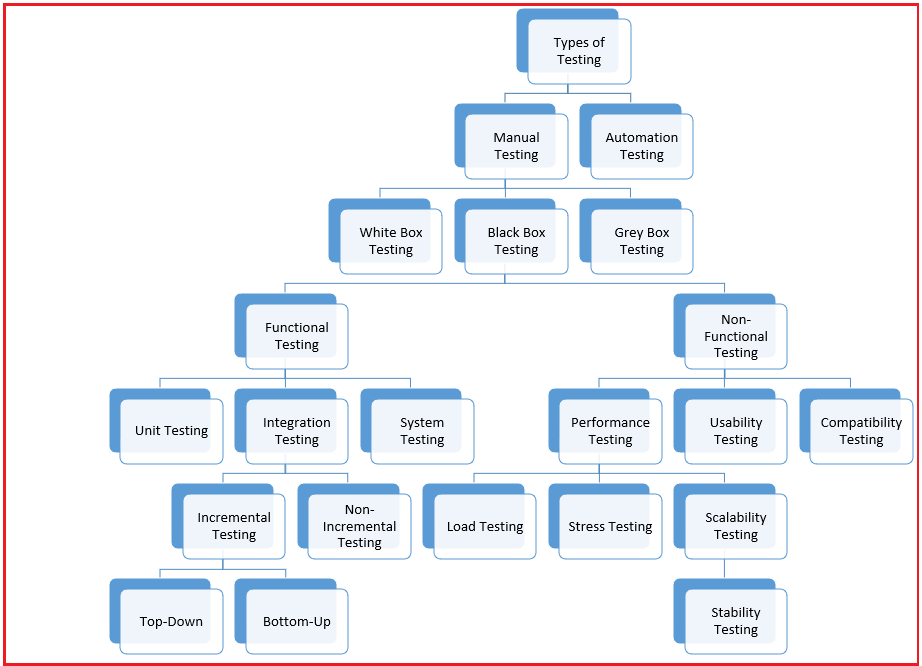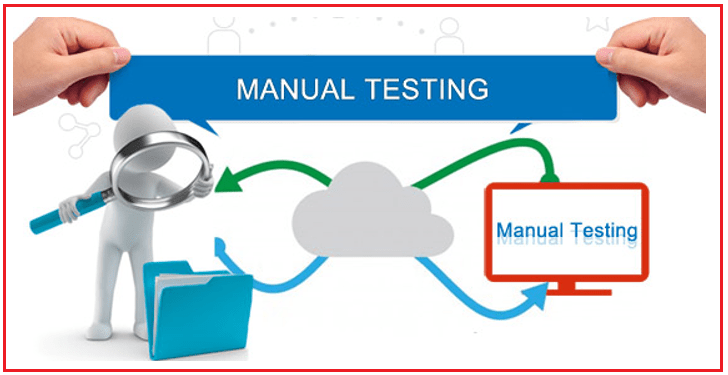Back to: Software Testing Tutorials
Types of Software Testing
In this article, I am going to discuss Types of Software Testing. Please read our previous article where we discussed What is Software Development Life Cycle.
Types of Software Testing
Now, you will learn about various types of testing and the sub-types of main testing. But before going further let’s have a look at what we discussed earlier what is software testing?
As we know the practice of assessing and evaluating a software application or system to find any flaws, faults, or problems is known as software testing. To make sure the program performs as intended and complies with the criteria, it must be executed under controlled circumstances while being observed for behavior. The different sorts of software testing must be carried out if we want to be sure that our software is stable and free from bugs, as testing is the sole procedure capable of making an application bug-free.

What are the different types of Software Testing?
Software testing is an essential step in the lifecycle of software development that serves to guarantee the effectiveness, dependability, and quality of software systems. Software testing comes in a variety of forms, each with its own goals and strategies which are categorized into two types.
Manual Software Testing:
Without the use of automation tools, manual testing involves the manual execution of test cases. It entails assessing the usability, performance, and functioning of software to find errors, flaws, and inconsistencies. Testers adhere to predetermined test scenarios while documenting their findings for analysis. For instance, a tester might manually walk through several pages of a web application, enter data into forms, and check to see if the predicted results match the actual outcomes. Additionally, they would test various user interactions, evaluate error messages, and examine responsiveness across multiple devices. Manual testing makes sure that software is thoroughly examined and offers insightful feedback to raise its quality.

Manual Testing can be further divided into three types:
White Box Testing – White box testing is a software testing technique that looks into an application’s core architecture, logic, and implementation. To assure the accuracy and completeness of the system, it involves testing based on knowledge of the code, such as statement coverage, path coverage, and code reviews.
Black Box Testing – Black box testing is a method of software testing in which the tester is not aware of the internal organization, conception, or execution of a system. Without taking into account the system’s internal operations, it concentrates on assessing the system’s functionality by looking at its inputs and outputs. Black Box Testing can also be categorized into further types:
- Functional Testing – Software testing techniques such as functional testing compare the system’s functionality to predetermined requirements. It checks to see if the program completes the intended tasks successfully and that all features operate without problems or mistakes. Functional Testing can also be categorized into three types Unit Testing, Integration Testing, and System Testing where Integration Testing also has subtypes which we will explain in a different article brief.
- Non- Functional Testing – Software testing that assesses a system’s or application’s characteristics unrelated to its specific functionality is known as non-functional testing. In order to assure the overall quality and usefulness of the product, it places a strong emphasis on factors like performance, usability, dependability, security, and scalability. Non-Functional Testing can be categorized into three type Performance Testing, Compatibility Testing, and Usability Testing where these testing also has subtypes which we will explain in the next article in brief.
Grey Box Testing – A software testing method called grey box testing combines aspects of black box testing and white box testing. The innermost workings of the system being tested are only partially known to the testers. As an illustration, consider testing a web application where testers have access to the source code but aren’t fully aware of how it is implemented.
Automation Software Testing:
Automation testing is a method of software testing that employs tools and scripts to carry out monotonous, repetitive operations in order to confirm a software application’s stability and performance. It entails the development of test scripts that mimic user interactions, verify anticipated results, and contrast them with actual outcomes. Organizations can save time, effort, and money by automating these checks. For instance, while testing a web application, a test script can be written to automatically complete forms, click buttons, and confirm that the displayed data is accurate. This eliminates the need for manual testing and enables quicker and more effective software releases.

In the next article, I am going to discuss the Different Levels of Software Testing. Here, in this article, I try to explain the Types of Software Testing. I hope you enjoy this Types of Software Testing article.
